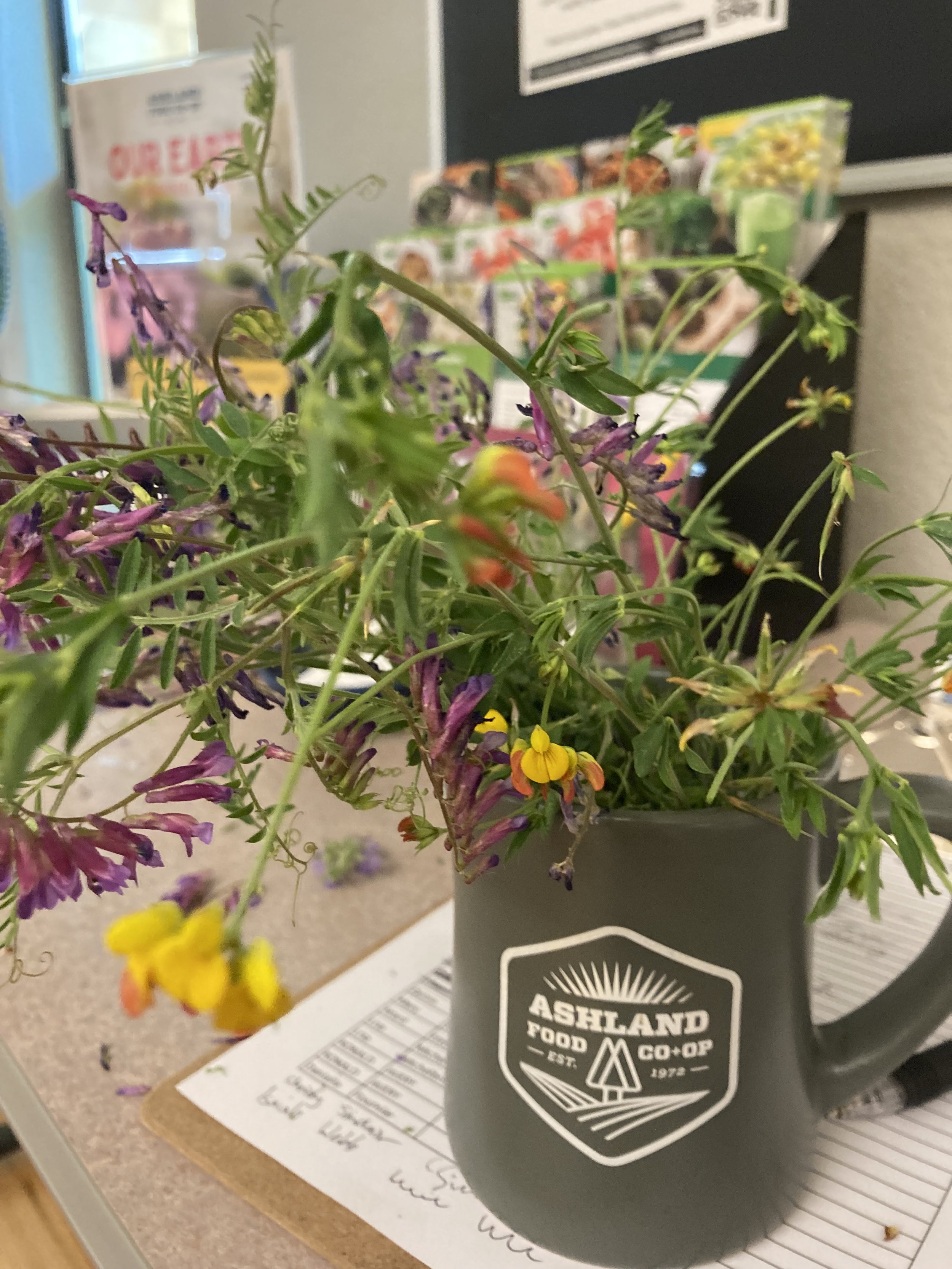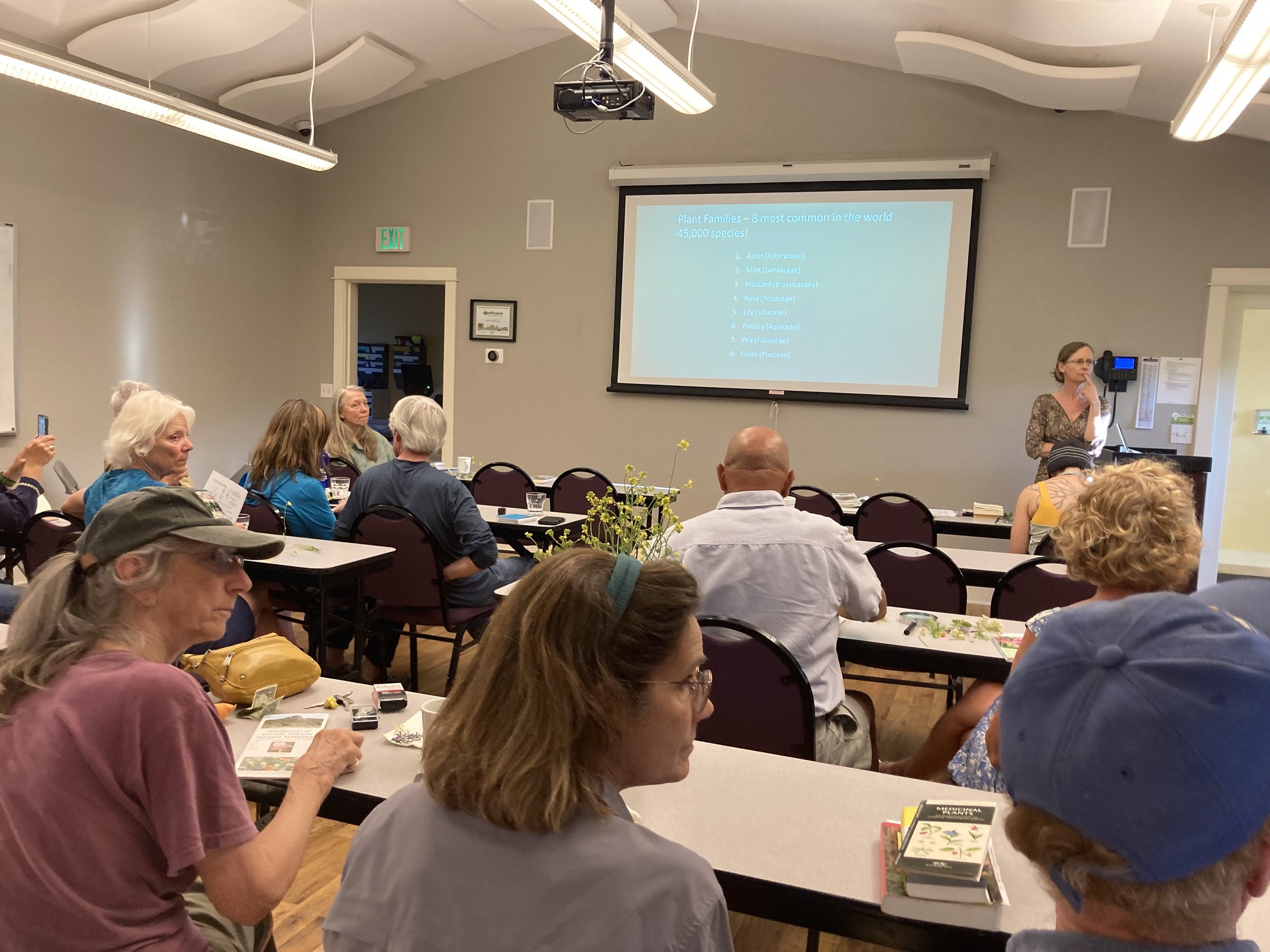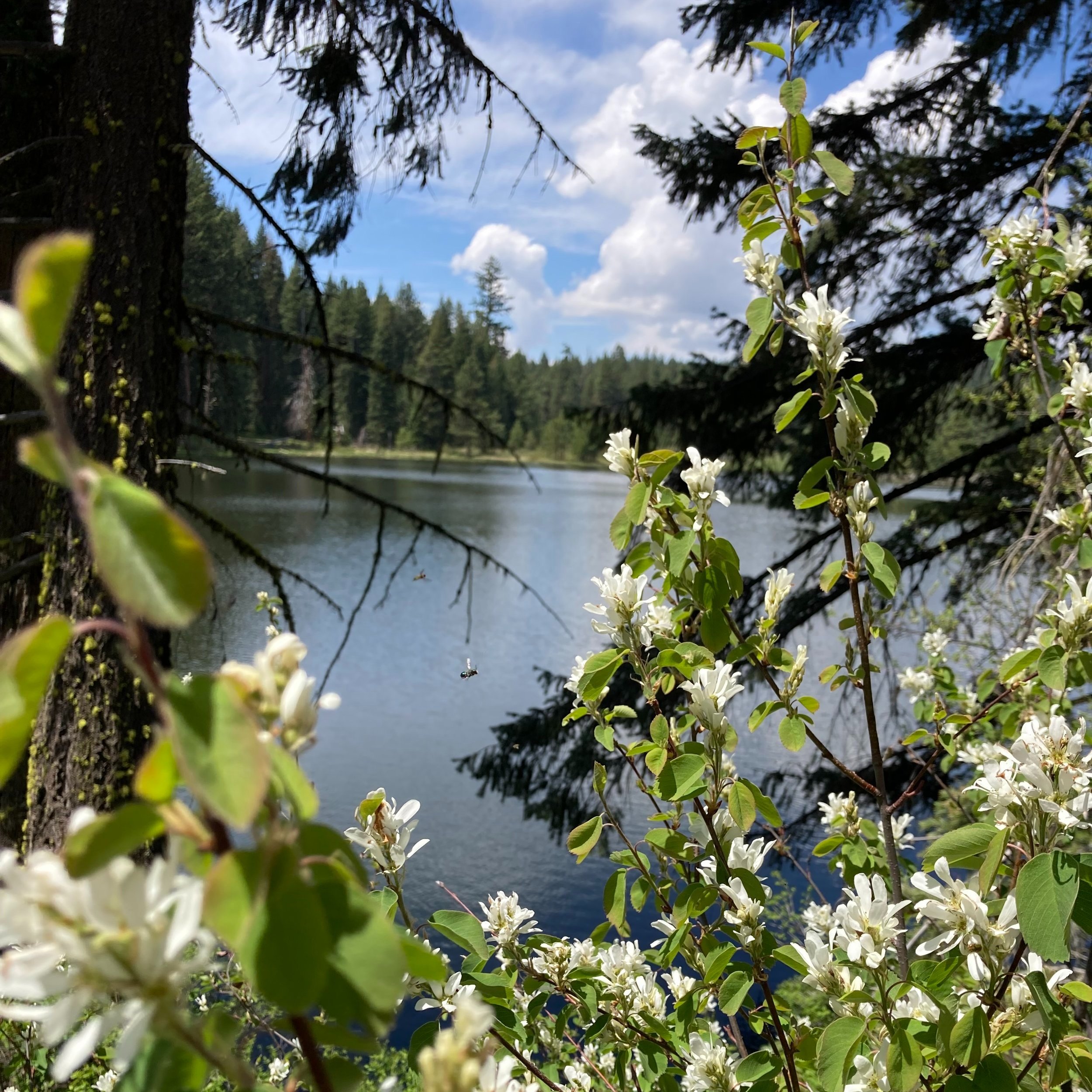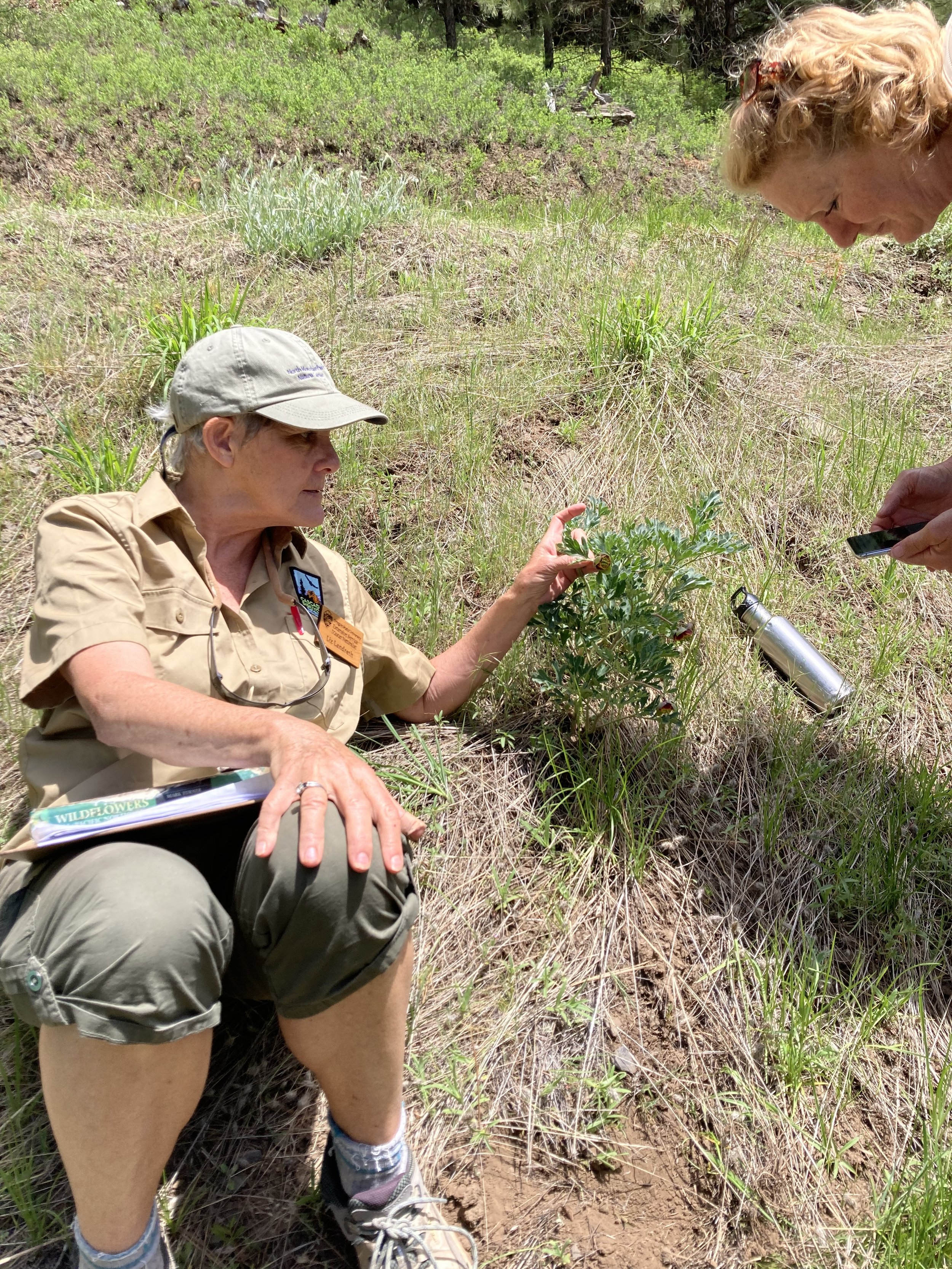On Friday, May 26, the Co-op classroom looked like the outside had come inside a little more than usual. All around the room were rag-tag bunches of flowering plants placed in an eclectic collection of containers. While they may have made for underwhelming decorative bouquets, they were there for a much more interesting purpose: Plant identification! More specifically, they were for plant identification using the Botany in a Day methodology by Thomas J. Elpel. Instead of focusing on memorizing individual species, Elpel’s method has the student learn plant families. This is a relatively less overwhelming task and can be done by learning to recognize patterns associated with each family.
There are approximately 320,000 described plant species worldwide; of those, they fall into hundreds of families. However, for the class, Collette Streight –Executive Director of Friends of the Cascade-Siskiyou National Monument and that night’s instructor– selected seven of the most common to focus on
Rose Family (Rosaceae)
Aster Family (Asteraceae)
Mint Family (Lamiaceae)
Pea Family (Fabaceae)
Mustard Family (Brassicaceae)
Parsley Family (Apiaceae)
Lily Family (Liliaceae)
After Collette introduced each plant family, everyone took out their hand lenses and examined the unconventional bouquets where an example was present. Participants were soon counting petals and identifying inferior and superior ovaries! We learned that in the aster family, there are actually two kinds of flowers: Disc flowers and ray flowers. What looks like one large flower to most people (think of a sunflower) is made up of hundreds of individual flowers, each with its own set of stamens and pistils.
Armed with this new knowledge about plant families, we met Liz Landreth on Saturday to get to know some flowers in their natural habitat. Liz, also known as the “Flower Floozy,” is an amateur botanist focusing on intriguing stories about plants and our relationship with them. Liz’s approach to plant identification, emphasizing species and habitat characteristics, paired well with Collette’s approach. Not only was Liz able to identify the plant species, but we could also use the Botany in a Day method to determine the family.
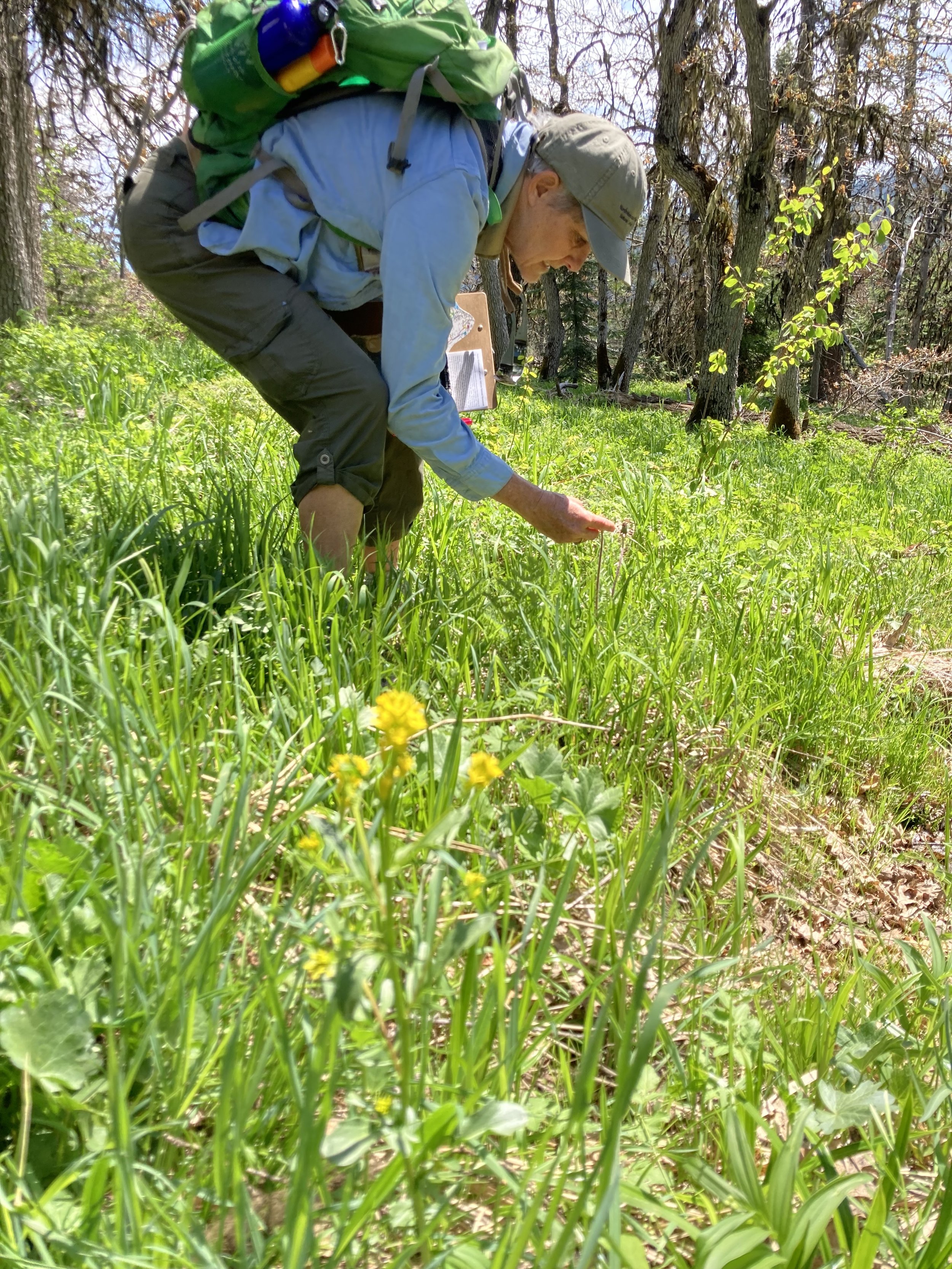
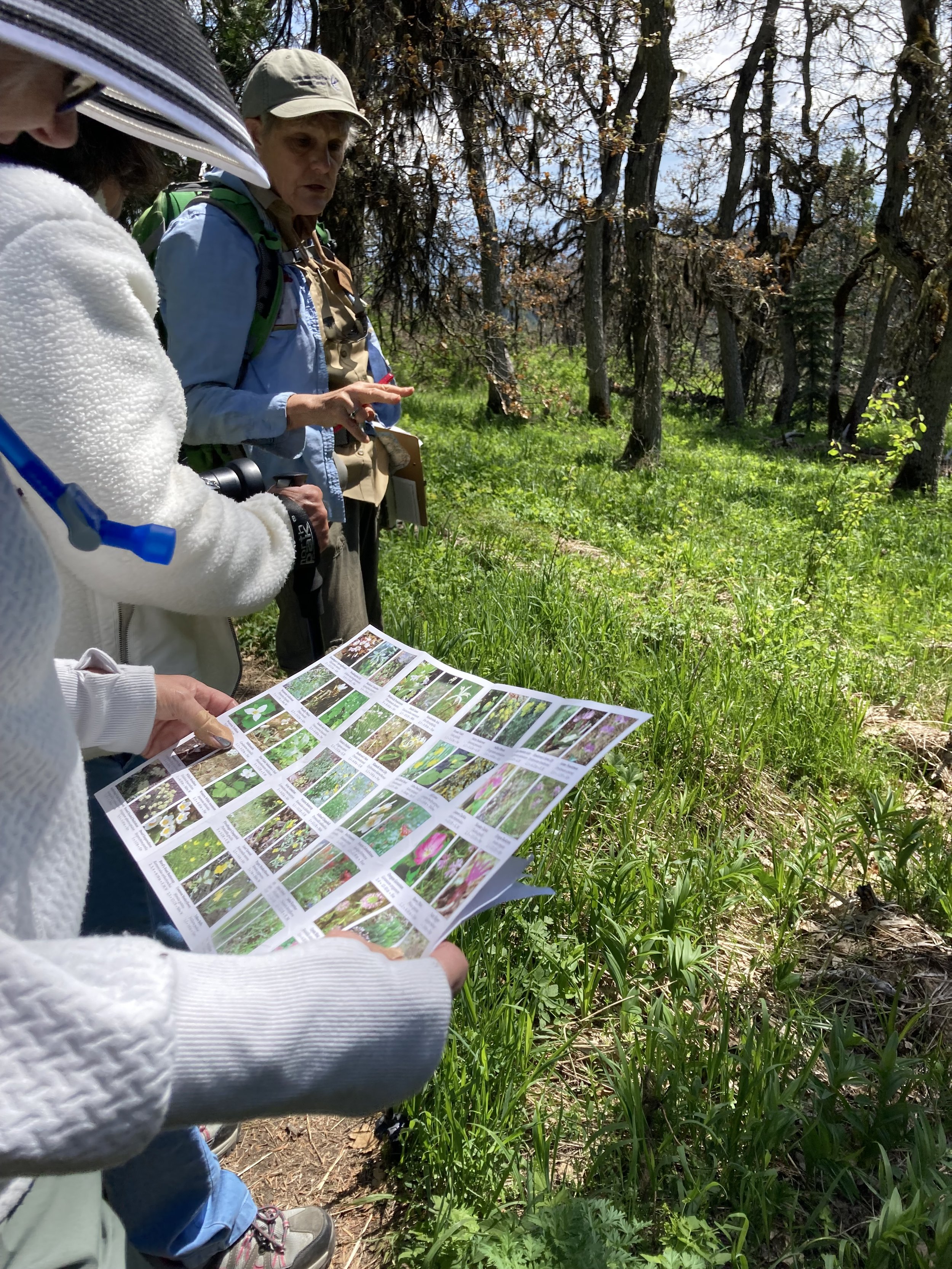
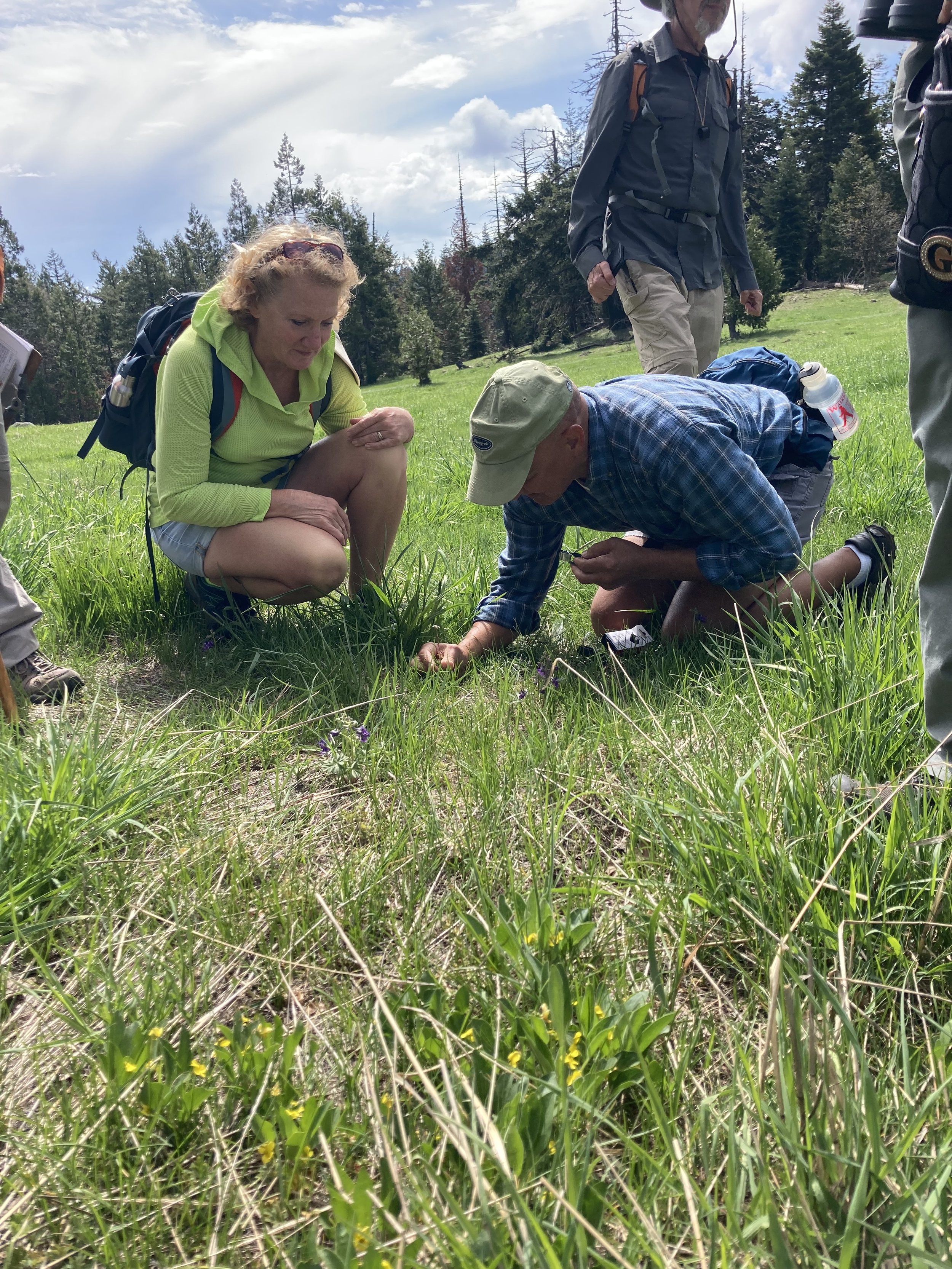
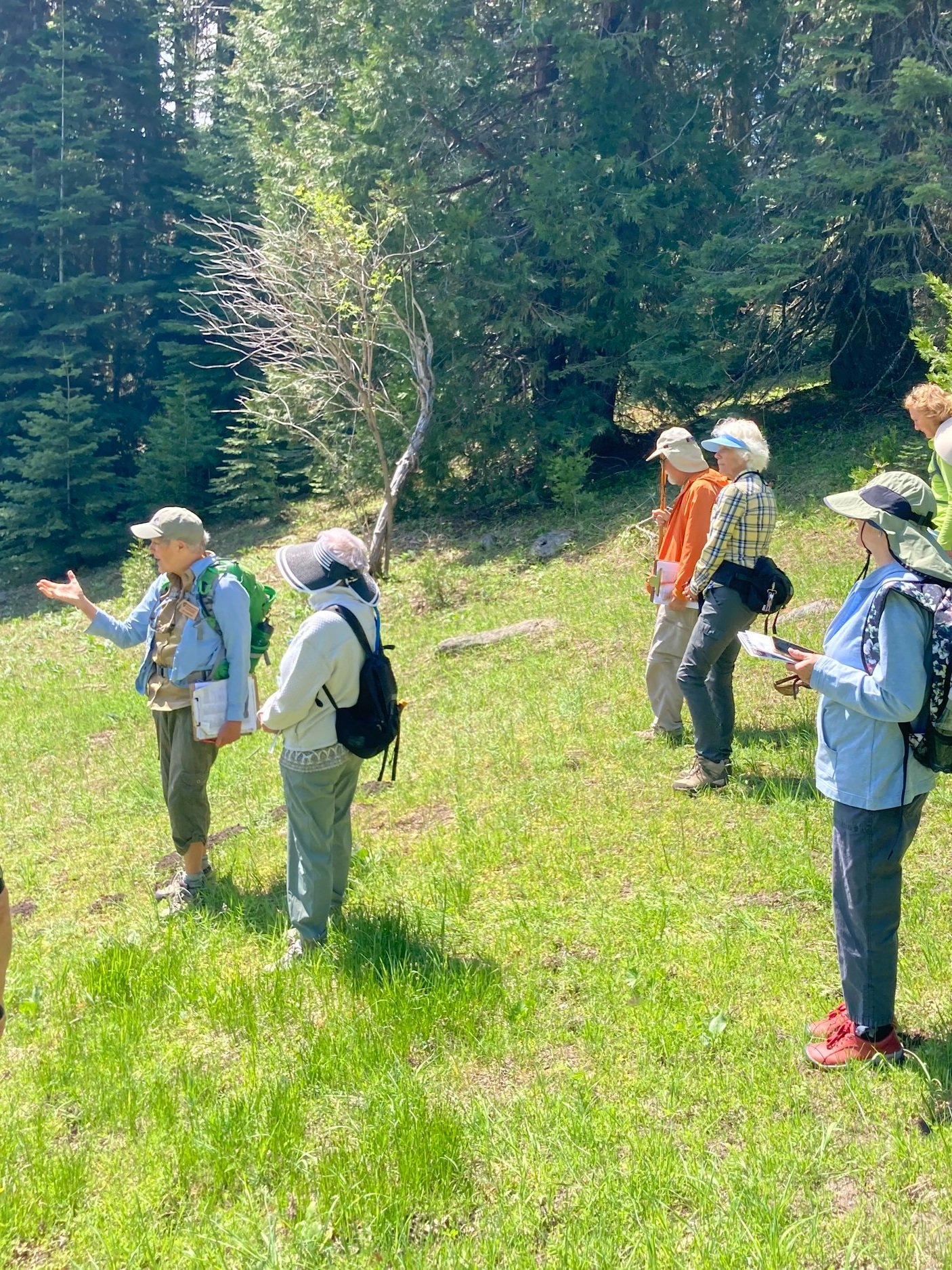

Our excursion started in the CSNM at a portion of the Pacific Crest Trail that passed Hobart Bluff. It would be an understatement to say that the area was botanically diverse. We made it only ten feet down the trail before Liz was pointing out flowers. Slowly we inched along, spending time with plants such as Jacob’s Ladder, waterleaf, and Larkspur.
“Whenever people ask me how long a wildflower hike is going to be,” Liz joked, “clearly have never been on one!” And she was right. We were marking distance by new species, not by miles. We spied many types of Lomatium –also called biscuit root– and Liz informed us that they were an important First Food for the Indigenous Peoples of the area and are still considered by their descendents today as an ecocultural source of carbohydrates. Under the tree canopy, we saw trillium and checkered fritillaria (a member of the lily family). We even observed a peony that was very different from the cultivated varieties found in gardens but whose similarities were also unmistakable. One by one, Liz had us gently feel its leaves which were cool to the touch.

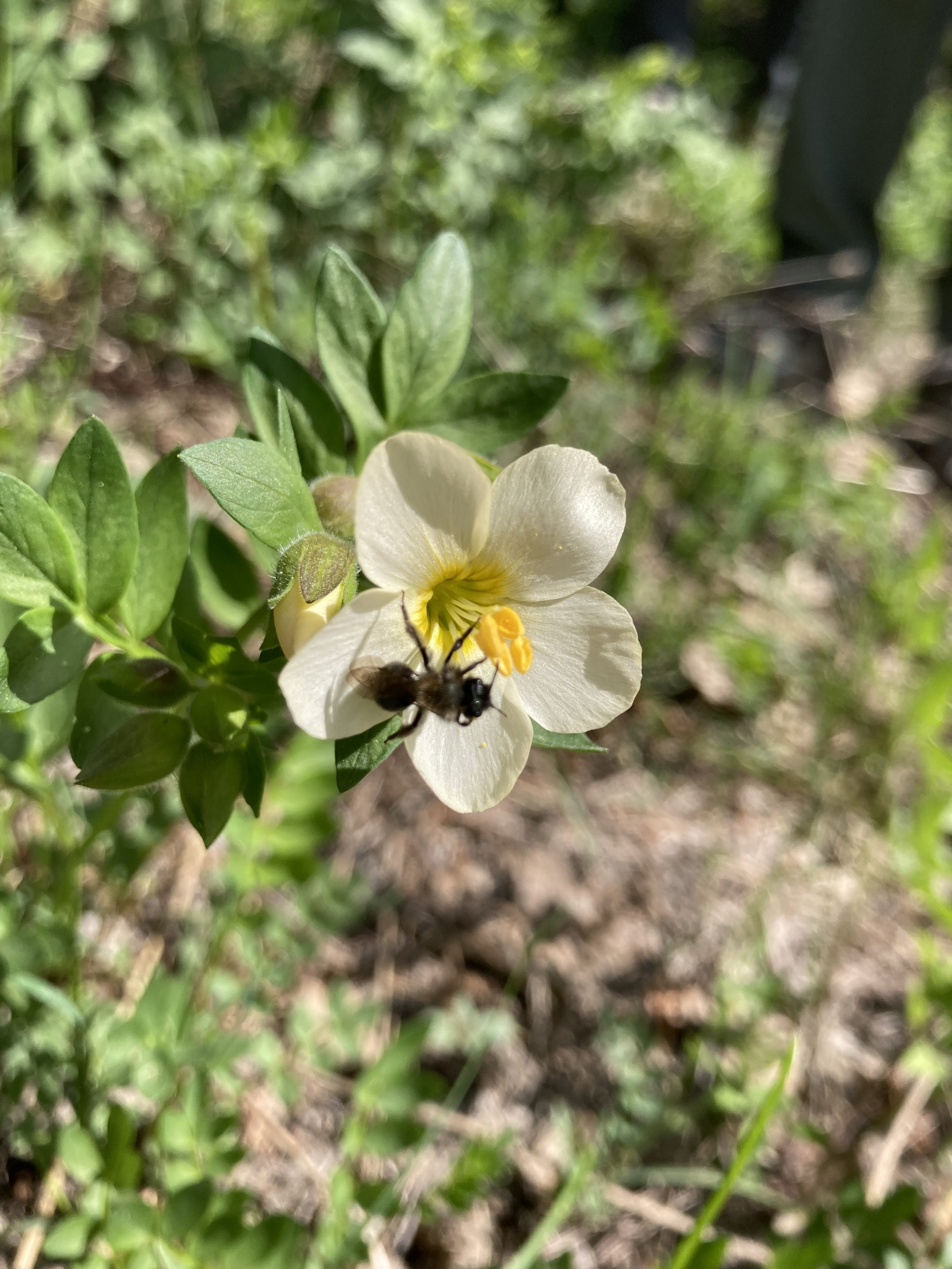
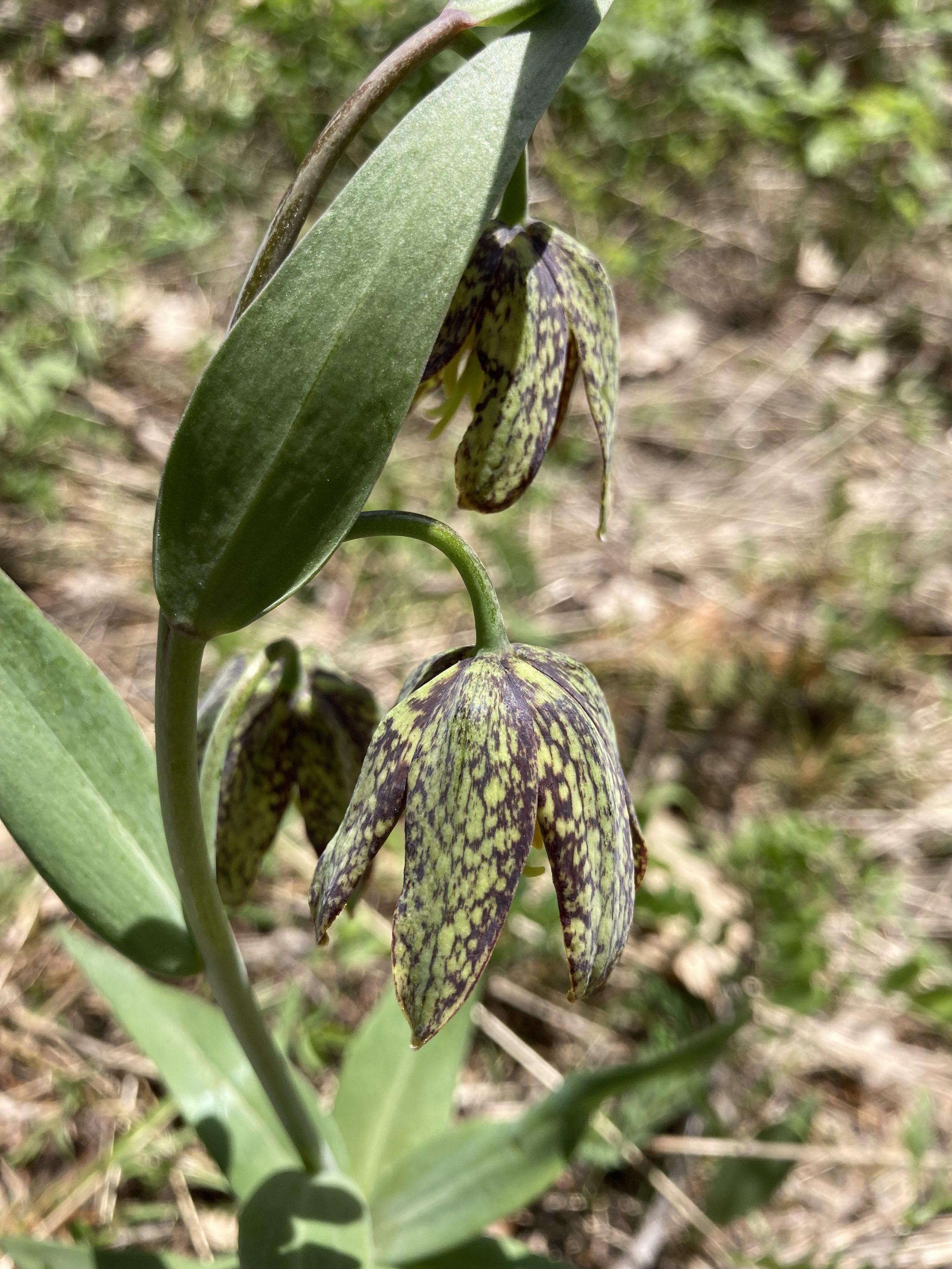
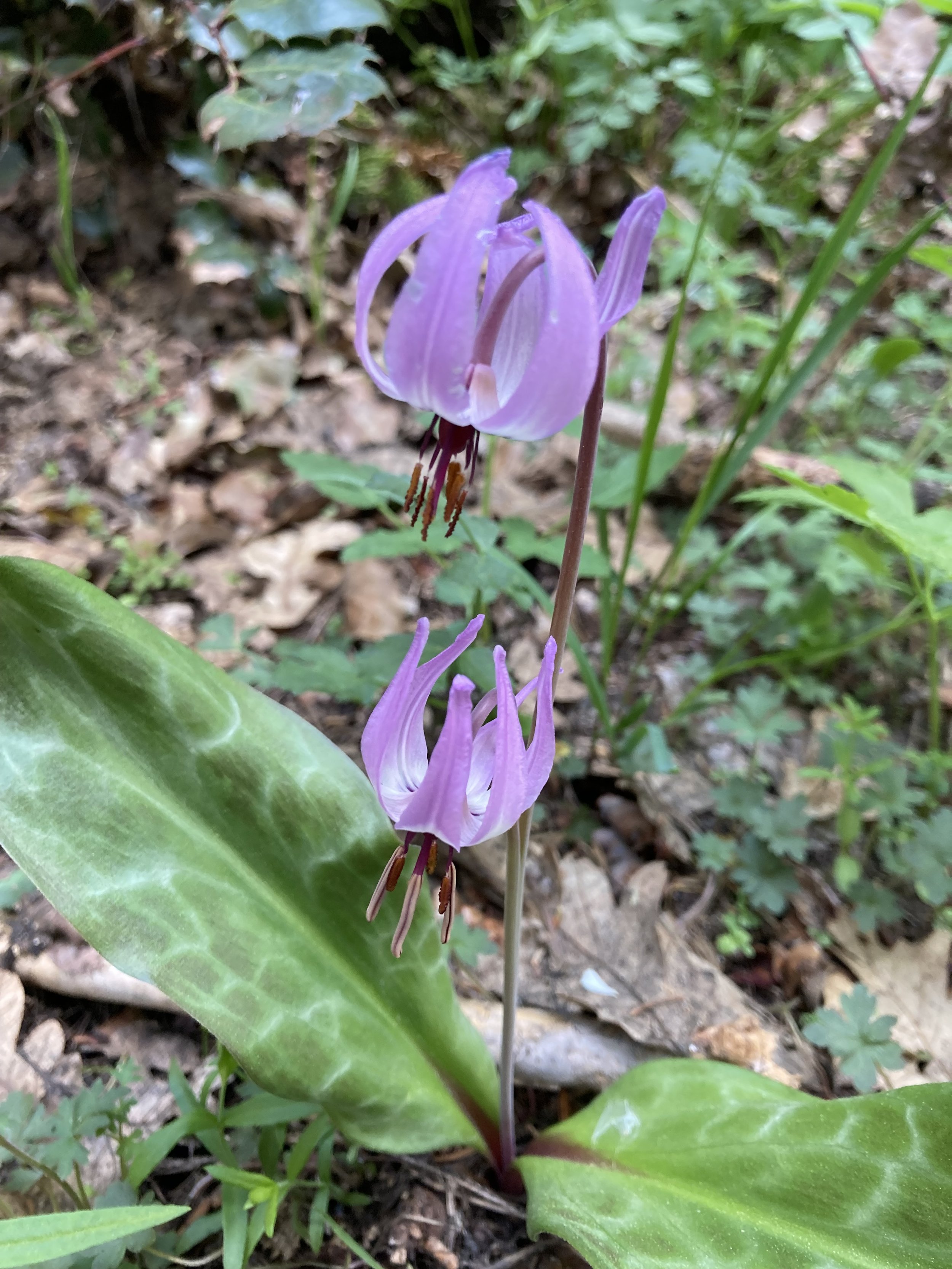

Our final stop was at Little Hyatt Lake, where we once again caught up with the Pacific Crest Trail. The meadow we walked through was drier and more exposed at this lower elevation. Yet we still saw the tell-tale umbel flowers of biscuitroot and the feathery fronds of medicinal yarrow. Nearby we could see the still blue water of the reservoir and thought of the summer to come and all of the flowers it would bring with it.


